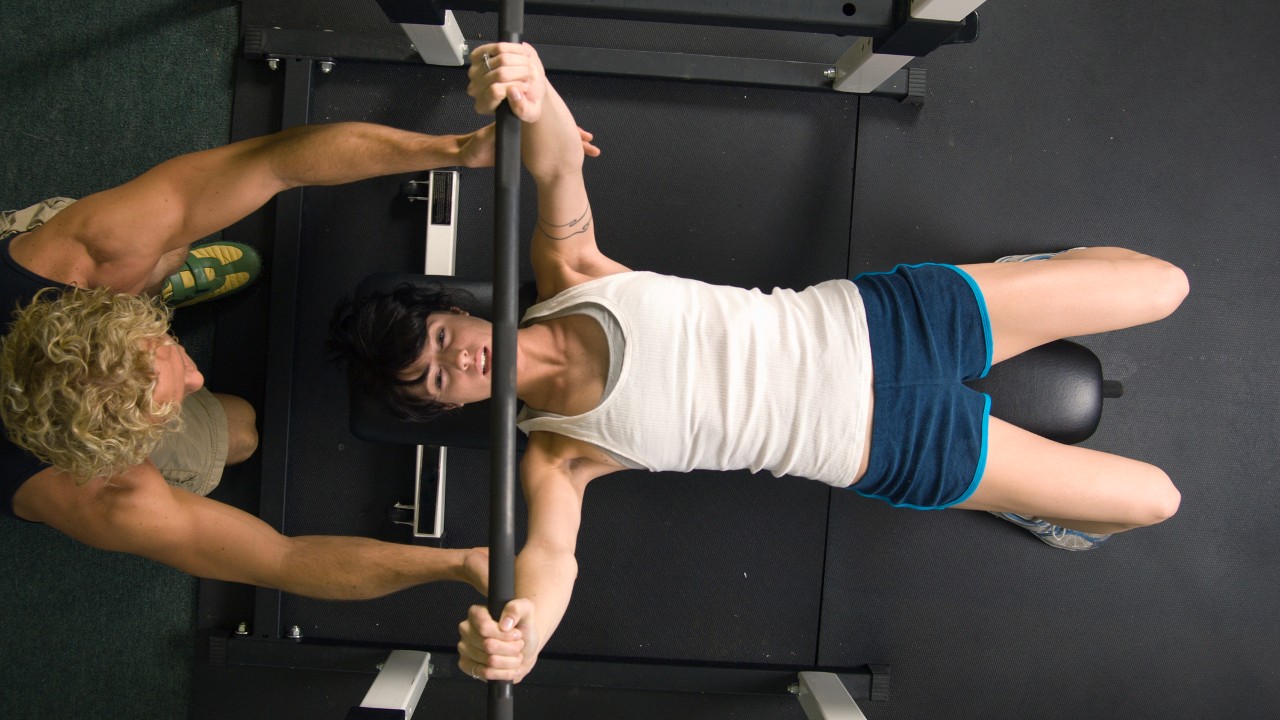Gym Spotting Guide For Weight Lifters: How To Spot Safely
Learn how to spot your training partner safely in the gym with this expert advice

When you’re really pushing yourself in the gym and working close to your limits with heavy weights, you need a spotter. They’re not there to lift the weight for you, but they will make your workout safer – as long as they know what they’re doing.
For all the info you need on how to spot someone safely, including how much to help, we spoke to Elliot Upton, global head of online training for Ultimate Performance.
Elliott Upton is a personal trainer certified by the National Academy of Sports Medicine (NASM) and is head of online training at Ultimate Performance. He is also currently gym manager at UP’s Marbella gym and has more than 15 years’ experience as a personal trainer, delivering more than 20,000 hours of one-to-one sessions and multiple sell-out seminars all over Europe.
What is spotting?
The easiest way to think about spotting is that it is allowing someone to lift to their limit safely. A lot of people assume spotting is taking someone way past their limit, but safety is the key thing.
When someone is approaching their limit, it’s not that they have an inability to generate the strength and the force to move the weight. Very often, it’s the ability to coordinate stabilising the weight while generating that force that’s the problem.
Spotting helps someone approach or just mildly pass that limit by 2%. This allows them to stress the muscle as much as it genuinely needs to be stressed in order to push past plateaus and generate adequate amounts of muscle damage.
If you’re bodybuilding, specifically, you do want to be pushing that muscle pretty close to failure. Every now and then you’ll overstep that mark. So spotting allows you to approach that limit or go just beyond it safely.
How much should you help someone when spotting?
Remember it’s about keeping someone safe. So if help is needed, it generally should be help maintaining good technical form. Priority number one, especially for beginners, is to ensure that person is technically safe.
If you’re slightly more advanced and you’ve got better technique, then the spotter might be able to start pushing you past your limits, because you’re not going to default to bad form.
You can look at maybe 2-5% assistance, perhaps when they are at a sticking point. Take a bench press for example. They can get the bar off their chest, and generally there’s a sticking point when the elbows reach about 90°. If you can get under the bar, or in the case of dumbbells under their elbows, then you can give them 2-5% of your effort. Then that pushes them past a sticking point. That’s probably close to a perfect spot. If you’re lifting 10-15% of the weight, there’s a problem.
How do you stay safe yourself while spotting?
The more experienced you are, the better you’re going to get at spotting. Every single movement is different, so you need to know how to spot that particular exercise and understand where you should be. There are resources out there to show you how to spot certain movements – do your research first.
Then the fundamentals: number one, make sure you’re strong enough to spot that person; number two, make sure that you are stable and safe yourself.
Get the Coach Newsletter
Sign up for workout ideas, training advice, reviews of the latest gear and more.
If someone can bench press 200kg, but the spotter can’t bench 60kg, they can’t help when something goes wrong or even to get past a sticking point. Let’s say 5% assist is needed – 5% of 200kg is still a significant amount of weight to be leaning forwards and trying to upright row. If someone comes up and asks you for a spot and you don’t feel confident doing it, say so.
Then the next fundamental is your base of support. You have to be ultra-stable no matter how that weight moves – expect it to move unpredictably. If you can keep yourself safe and stable, you should be able to keep the lifter safe and stable.
The other thing I would add is communication. Understand exactly how that lifter wants to be spotted, because spotters can get in the way as early as unracking the bar. Make the lifter tell you exactly what is required: when the bar is going to be lifted, when to let go of the bar. A common way to do it is to say “your bar”, or “my bar”, so you know who has control.
For more expert advice from Ultimate Performance, read how to bench more, how to pick the right weight and how to use negative reps to get more out of the gym.

Nick Harris-Fry is a journalist who has been covering health and fitness since 2015. Nick is an avid runner, covering 70-110km a week, which gives him ample opportunity to test a wide range of running shoes and running gear. He is also the chief tester for fitness trackers and running watches, treadmills and exercise bikes, and workout headphones.









